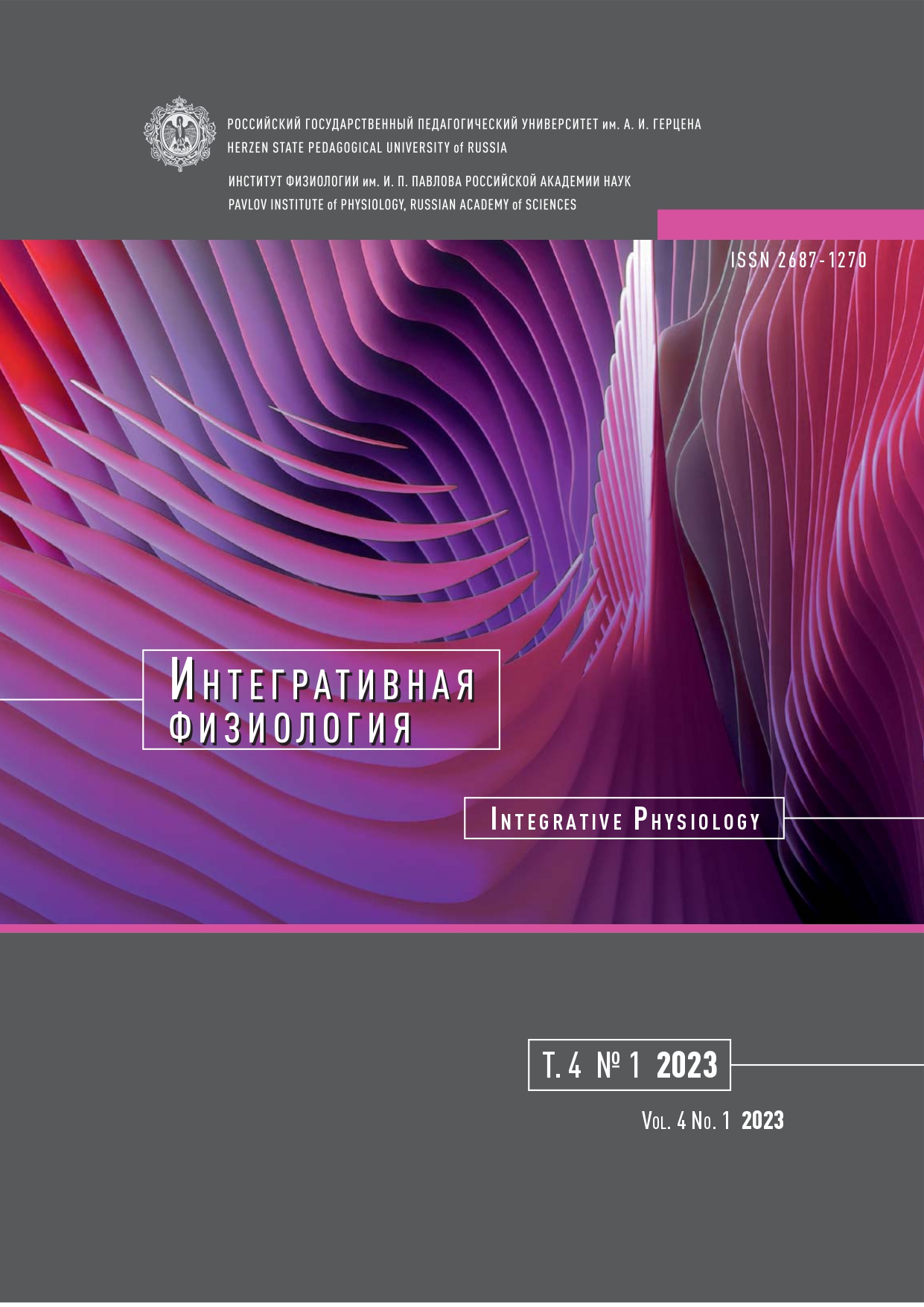Breathing parameters in healthy men and women in supine, sitting, and standing positions
DOI:
https://doi.org/10.33910/2687-1270-2023-4-1-122-127Keywords:
external breathing, tidal volume, vital capacity, respiratory rate, sex differences, postureAbstract
The present study aimed to investigate the relationship between postural stability, external breathing, and sex, as this area of research is not yet well explored. The study included 19 healthy participants, both male and female, and compared their breathing parameters in three positions: sitting, standing, and supine. The objective was to collect data to develop a non-contact method for recording external respiration. The analysis included measurements of vital capacity and forced vital capacity pulmonary tests, as well as parameters of natural breathing. We confirmed that the lung volume component was higher in males than in females in the sitting position. Additionally, postural influence on breathing was observed only in male participants, with no significant impact on females. Men also exhibited an increased respiratory rate in both standing and supine positions, as well as increased minute ventilation when standing as compared to sitting. Furthermore, men demonstrated higher maximum inspiratory and expiratory vital capacities in all positions as compared to women. These results have important implications not only for the development of non-contact methods for recording respiration but also in the studies of vertical stance, in clinical investigations.
References
Aysanov, Z. R., Kameneva, M. Yu., Chernyak, A. V. et al. (2021) Spirometriya. Rukovodstvo Rossijskogo respiratirnogo obschestva [Spirometry. Guidelines of Russian Respiratory Society]. [Online]. Available at: https://spulmo.ru/upload/spirometriya_16_12_2021_extEd.pdf?t=1 (accessed 05.02.2023). (In Russian)
Dean, C. J., Sell, T. C., Robertson, A. M. (2020) Sex-based differences in postural stability: A systematic review. Duke Orthopedic Journal, vol. 10, no. 1, pp. 1–9. (In English)
Dominelli, P. B., Molgat-Seon, Y. (2022) Sex, gender and the pulmonary physiology of exercise. European Respiratory Review, vol. 31, no. 163, article 210074. https://doi.org/10.1183/16000617.0074-2021 (In English)
Forced Expiration. (1995) Johns Hopkins University. [Online]. Available at: https://oac.med.jhmi.edu/res_phys/encyclopedia/forcedexpiration/forcedexpiration.html (accessed 28.01.2023). (In English)
Graham, B. L., Steenbruggen, I., Miller, M. R. et al. (2019). Standardization of spirometry 2019 update. An official American thoracic society and European respiratory society technical statement. American Journal of Respiratory and Critical Care Medicine, vol. 200, no. 8, pp. e70–e88. https://doi.org/10.1164/rccm.201908-1590ST (In English)
Hall, G., Filipow, N., Ruppel, G. et al. (2021) Official ERS technical standard: Global Lung Function Initiative reference values for static lung volumes in individuals of European ancestry. European Respiratory Journal, vol. 57, no. 3, article 2000289. https://doi.org/10.1183/13993003.00289-2020 (In English)
Kocjan, J., Adamek, M., Gzik-Zroska, B. et al. (2017) Network of breathing. Multifunctional role of the diaphragm: A review. Advances in Respiratory Medicine, vol. 85, no. 4, pp. 224–232. https://doi.org/10.5603/ARM.2017.0037 (In English)
Neiva, P. D., Kirkwood, R. N., Mendes, P. L. et al. (2018) Postural disorders in mouth breathing children: A systematic review. Brazilian Journal of Physical Therapy, vol. 22, no. 1, pp. 7–19. https://doi.org/10.1016/j.bjpt.2017.06.011 (In English)
Swanney, M. P., Ruppel, G., Enright, P. L. et al. (2008) Using the lower limit of normal for the FEV1/FVC ratio reduces the misclassification of airway obstruction. Thorax, vol. 63, no. 12, pp. 1046–1051. https://doi.org/10.1136/thx.2008.098483 (In English)
Downloads
Published
Issue
Section
License
Copyright (c) 2023 Natalia D. Shandybina, Sergey S. Ananev, Tatiana A. Klishkovskaia, Andrey Yu. Aksenov, Tatiana R. Moshonkina

This work is licensed under a Creative Commons Attribution-NonCommercial 4.0 International License.
The work is provided under the terms of the Public Offer and of Creative Commons public license Creative Commons Attribution 4.0 International (CC BY 4.0).
This license permits an unlimited number of users to copy and redistribute the material in any medium or format, and to remix, transform, and build upon the material for any purpose, including commercial use.
This license retains copyright for the authors but allows others to freely distribute, use, and adapt the work, on the mandatory condition that appropriate credit is given. Users must provide a correct link to the original publication in our journal, cite the authors' names, and indicate if any changes were made.
Copyright remains with the authors. The CC BY 4.0 license does not transfer rights to third parties but rather grants users prior permission for use, provided the attribution condition is met. Any use of the work will be governed by the terms of this license.







